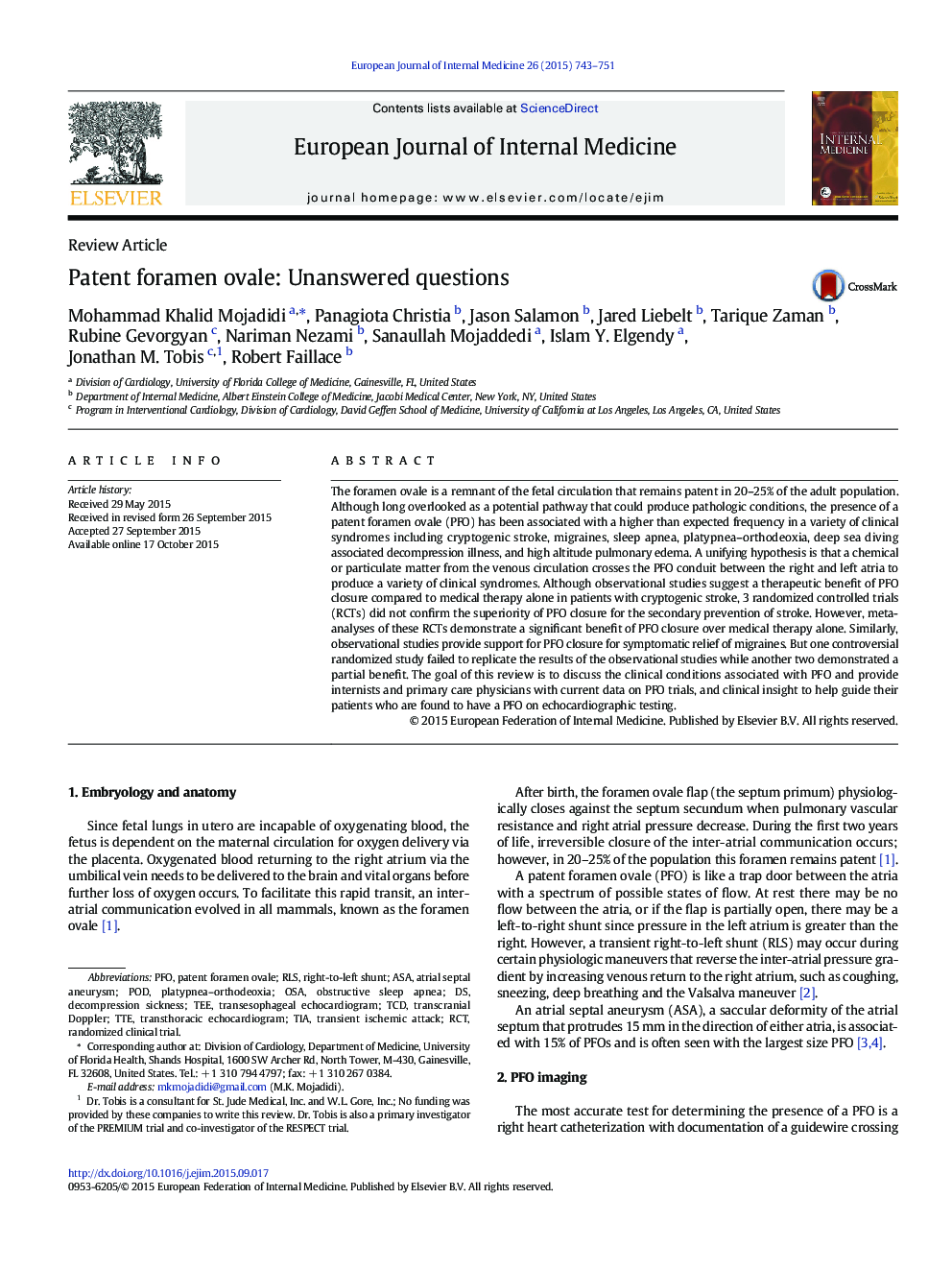| Article ID | Journal | Published Year | Pages | File Type |
|---|---|---|---|---|
| 6151607 | European Journal of Internal Medicine | 2015 | 9 Pages |
â¢PFO has been linked to cryptogenic stroke, migraines and hypoxemiaâ¢Venous substances may cross a PFO conduit via a right-to-left shunt to produce these syndromesâ¢Three RCTs did not confirm benefit of PFO closure for stroke prevention; meta-analyses of the RCTs showed a benefitâ¢One RCT failed to show benefit of closure in migraineurs while another two demonstrated a partial benefitâ¢Percutaneous PFO closure is a relatively safe procedure
The foramen ovale is a remnant of the fetal circulation that remains patent in 20-25% of the adult population. Although long overlooked as a potential pathway that could produce pathologic conditions, the presence of a patent foramen ovale (PFO) has been associated with a higher than expected frequency in a variety of clinical syndromes including cryptogenic stroke, migraines, sleep apnea, platypnea-orthodeoxia, deep sea diving associated decompression illness, and high altitude pulmonary edema. A unifying hypothesis is that a chemical or particulate matter from the venous circulation crosses the PFO conduit between the right and left atria to produce a variety of clinical syndromes. Although observational studies suggest a therapeutic benefit of PFO closure compared to medical therapy alone in patients with cryptogenic stroke, 3 randomized controlled trials (RCTs) did not confirm the superiority of PFO closure for the secondary prevention of stroke. However, meta-analyses of these RCTs demonstrate a significant benefit of PFO closure over medical therapy alone. Similarly, observational studies provide support for PFO closure for symptomatic relief of migraines. But one controversial randomized study failed to replicate the results of the observational studies while another two demonstrated a partial benefit. The goal of this review is to discuss the clinical conditions associated with PFO and provide internists and primary care physicians with current data on PFO trials, and clinical insight to help guide their patients who are found to have a PFO on echocardiographic testing.
